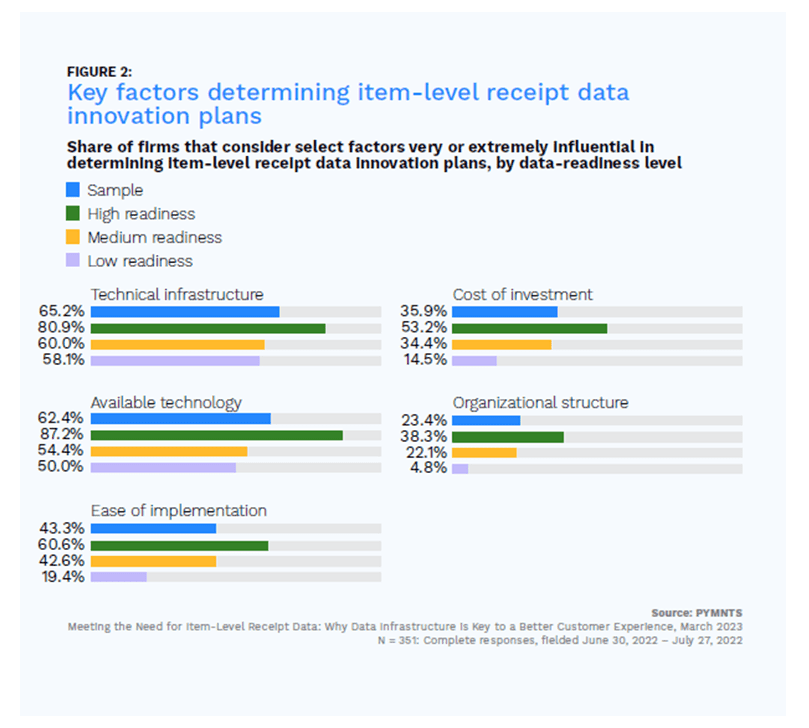Data-Ready Banks May Have Competitive Edge in Digital Innovations

Financial institutions (FIs) with technical infrastructure already in place could be better positioned to win over customers.
Data readiness is nearly imperative these days for banks, credit unions and other FIs hoping to utilize the most innovative technologies to gain greater insights. Through advanced analytics, FIs may use the massive amount of data collected to gain greater insights into both consumer and customer behavior. These insights can then be used to leverage growth strategies, including plans to increase loyalty, or they can aid in achieving other goals that benefit from detailed information analysis.
One such example of these “big information” strategies justifiably drawing attention due to its potential for greater consumer insights is receipt data utilization. Properly implemented, receipt data has been proven to lead to more personalized rewards and stickier customer relationships.
Of course, the ability to gain these benefits depends almost entirely on an FI’s preparedness, as these processes may include the implementation of automated software to extract and categorize massive amounts of data and require a modernized infrastructure. As detailed in PYMNTS’ latest collaboration with Banyan, “Meeting the Need for Item-Level Receipt Data,” factors such as infrastructure preparedness may determine the use of innovations such as item-level data analysis and what solutions it may offer.

When asked what factors were considered in making plans for item-level receipt data utilization, firms with high readiness cited nearly all the factors included in the survey as very or extremely influential. However, when firms of low and medium readiness were asked the same, the shares agreeing drop by double digits. This suggests a sort of self-fulfilling prophecy, with FIs putting in place systems and features that they find important.
In an interview with PYMNTS, Emburse CFO Adriana Carpenter detailed how firms within the financial industry and other sectors have a preparedness issue. Many aren’t equipped with the resources or expertise to analyze expense and payment data to transform this information into actionable insights. “The data that exists within companies is at the heart of everything that drives better decision-making. Historically, and very commonly, companies do not have a data strategy or data governance models to harness that data and to be able to layer on the tech that’s available to drive better decision-making,” she said.
Many FIs already know or are in the process of discovering that having all the data in the world doesn’t mean much without the ability to use it. However, using the proper modernization tools, organizations may benefit from smart use of this information — and perhaps give them an all-important competitive advantage.

